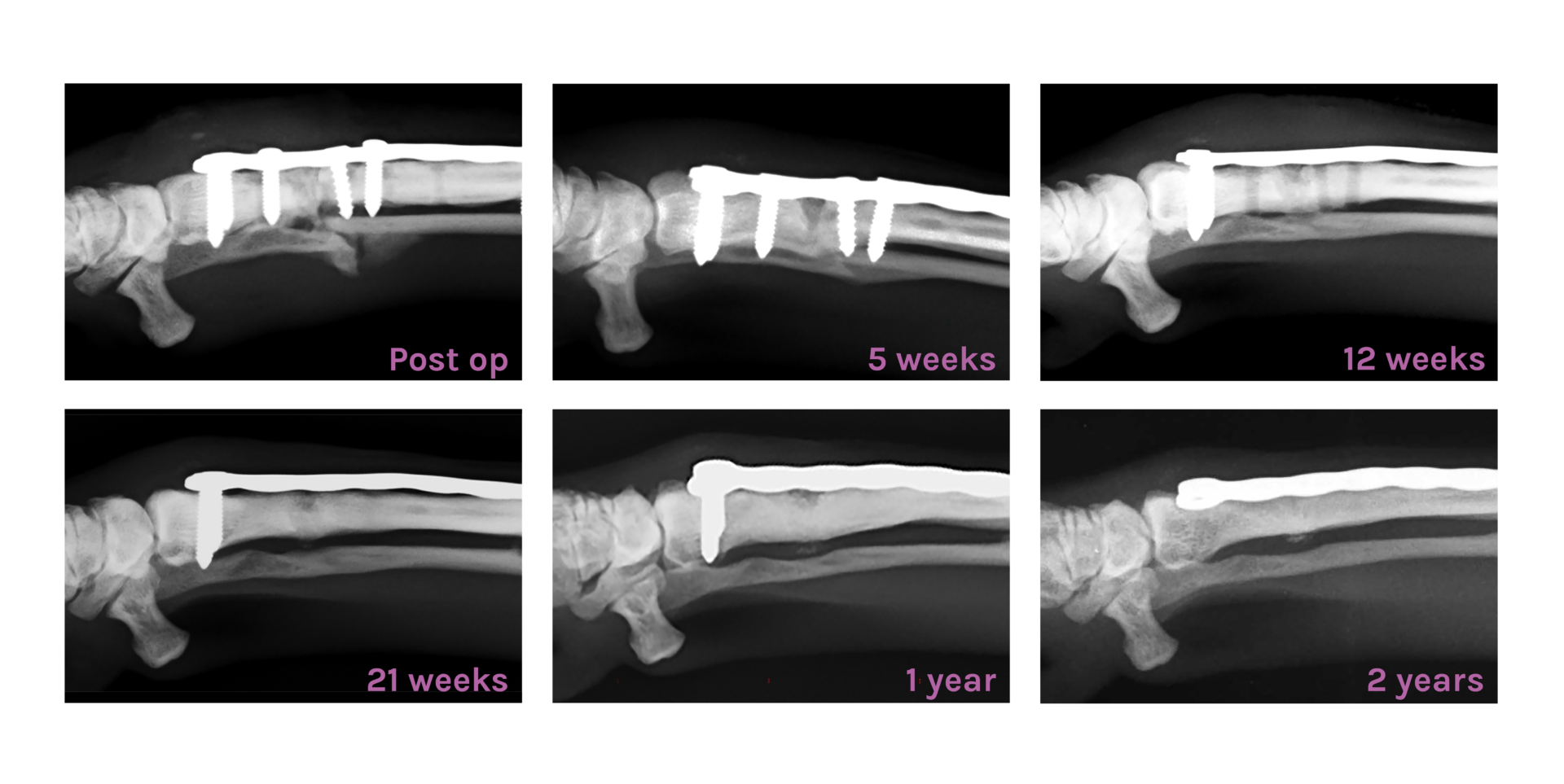Revision of a non-union: Treatment of Italian Greyhound’s fractures in radius and ulna diaphysis
A 5-year-old Italian Greyhound arrived at the clinic with complicated ulna and radius fractures. The dog had been operated on 4-5 weeks before elsewhere, but the position of the leg had started to worry his owner. During examination, instability was detected in the diaphysis of the lower third in the fracture-line, which caused the change in leg position. An X-ray showed that the fracture had not started to heal properly but it had developed into a non-union. The bone heads were reattached to each other with a locking plate. Thereafter, Adaptos®Vet bone graft substitute granules were implanted into the fracture line and its immediate proximity to support bone regeneration. After surgery, the dog was allowed to exercise to a limited extent, avoiding all exercise that causes non-essential strain into the fracture area.
Follow-ups after surgery
The dog arrived at a follow-up 10 days after surgery for stitch removal and X-ray. The position of the fractured bones was good. Five weeks after surgery only a slight limp was detected in the dog’s movement and x-ray demonstrated the progression of bone regeneration as moderate callus formation. Ten weeks after surgery, the fracture line was partly ossified. Twelve weeks after surgery plating was disengaged by removing 3 screws from the middle of the plate. After 21 weeks, the fracture line was fading, screw holes were ossifying well, and the ulna fracture had ossified. After one year, the fracture line had faded, and screw holes had ossified. The rest of the screws were removed, and the plate was left in its place. After two years bone remodeling was visible in x-ray and even though the fracture had healed, the cortex was not yet on display.

Adaptos®Vet for demanding osseous defects
A reason for the development of a non-union may be insufficient fixation of the fracture site, allowing some mobility of the defect site. This specific fracture was challenging as Italian Greyhound’s legs’ bones are long and thin. There is only a little trabecular bone in bone diaphysis, poor vascularization and a low amount of soft tissue resulting in a lower metabolism in the area. Furthermore, due to the length of the leg a larger torsional force is directed in the leg. For that reason, there is a higher risk of fracture in this area and, the healing of fractures may be challenging. A bone graft is needed when the bone defect is large, complicated, or when the surrounding tissue is severely injured. Autologous bone harvesting from small dogs in a sufficient amount is challenging. Therefore, a synthetic bone graft substitute that has the capacity to support bone regeneration may offer a feasible alternative to support the treatment of a more severe fracture.